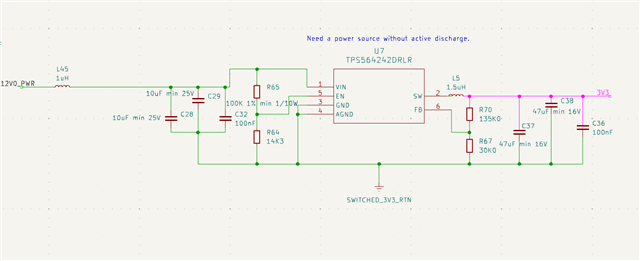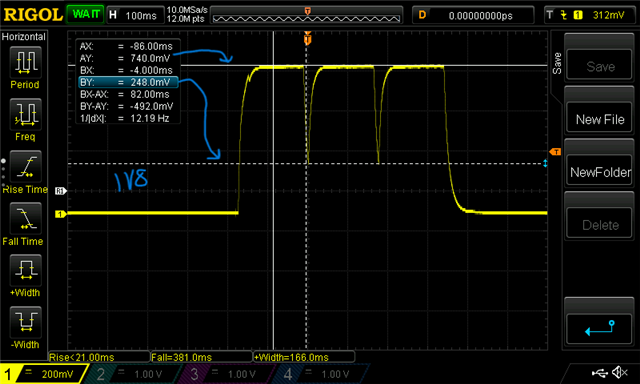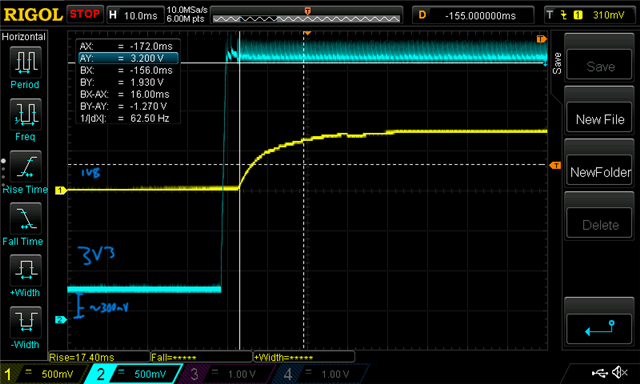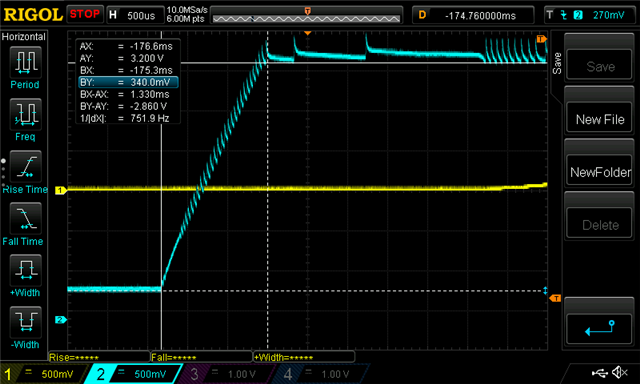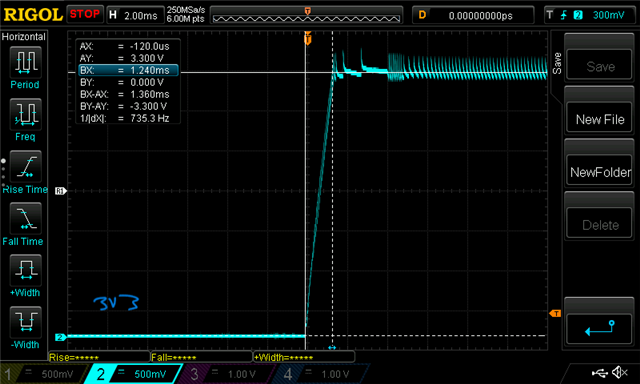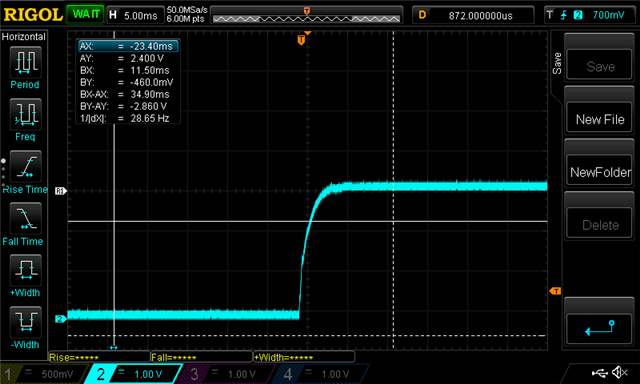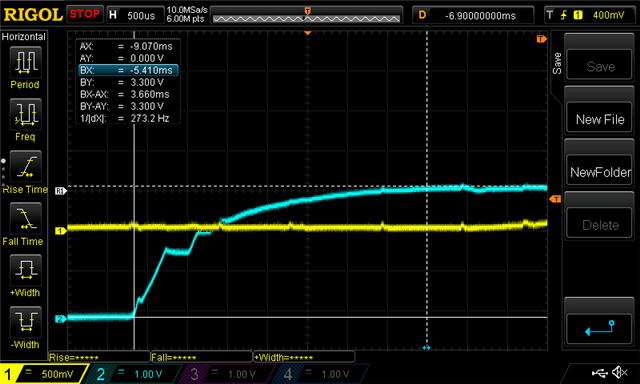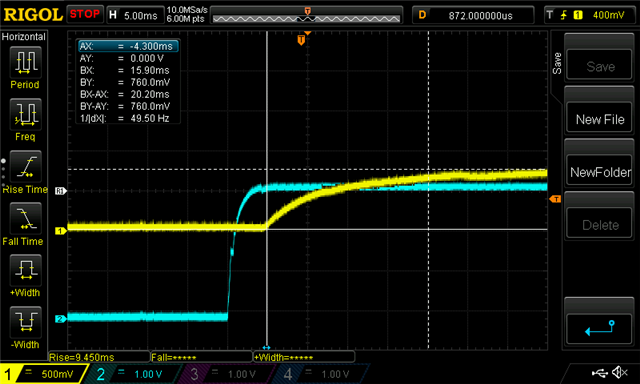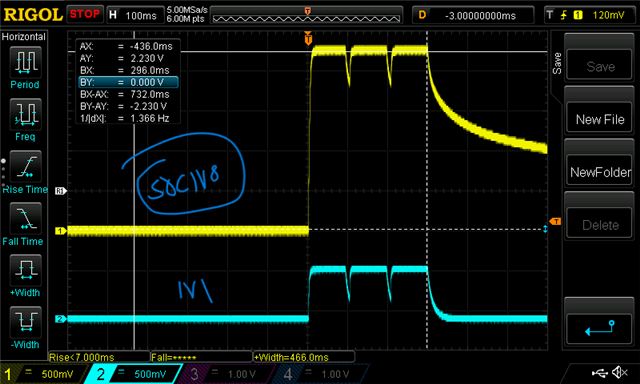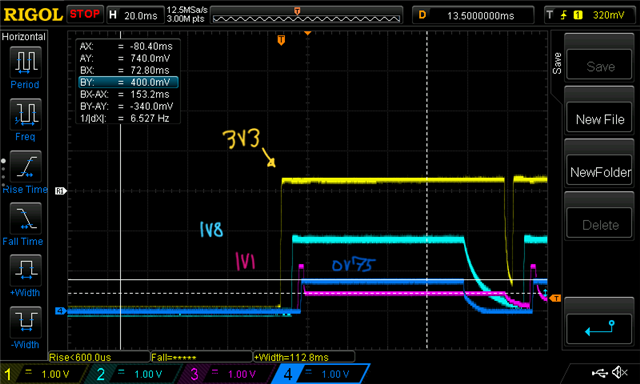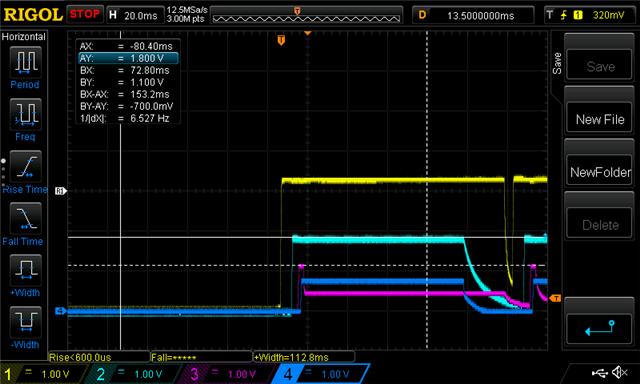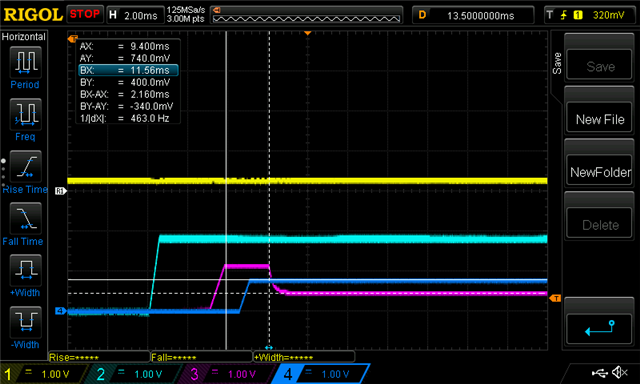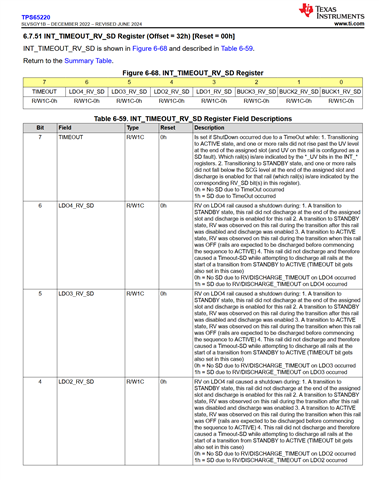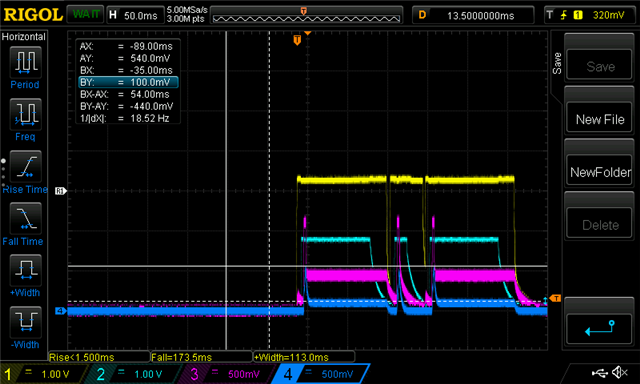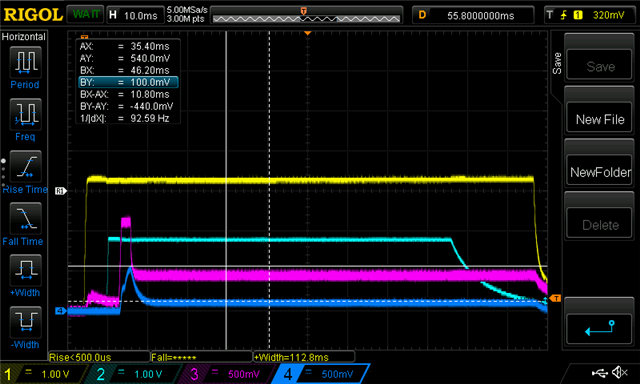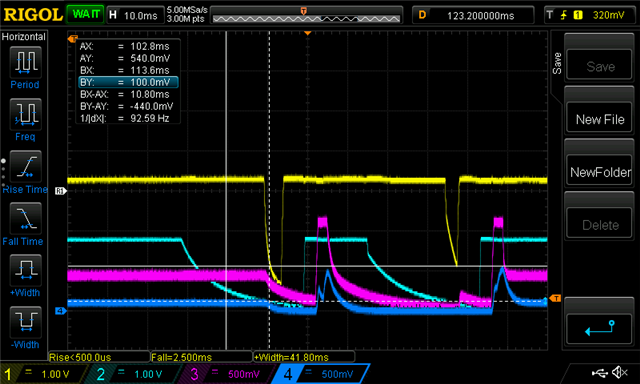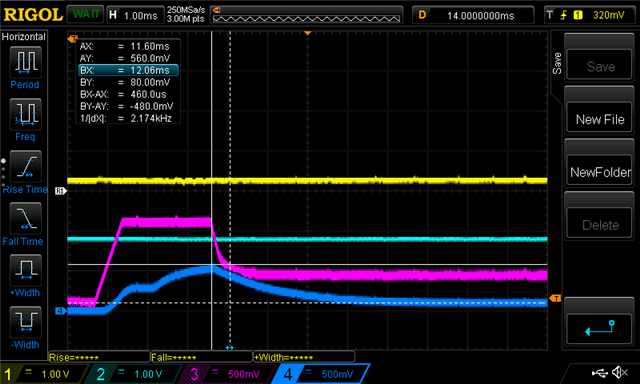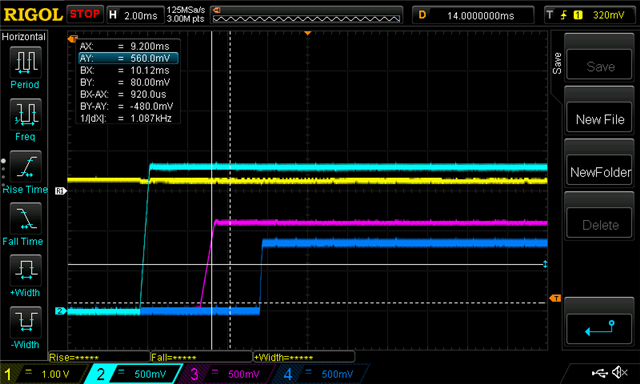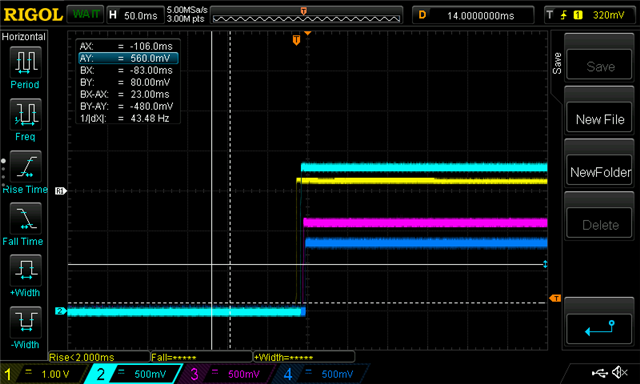Other Parts Discussed in Thread: AM6442
Tool/software:
Hi all - I'm seeing that GPO2 is trying to turn on 3 times, but the power rails are not able to come completely up- after which it seems to give up until power removal/reapplication.
First scope shot is the 3v3 power rising, next is the power and EN rising, the remainder are the BUCK2 / LDO4/ BUCK3 / BUCK1 shown against VIN and GPO2. Measurements are at the pins of the TPS6522053 package.
My first thought would be whether or not this a matter of insufficient supply to the TPS6522053 (e.g. not enough capacitance at input) to keep the input from sagging below a UV lockout value?
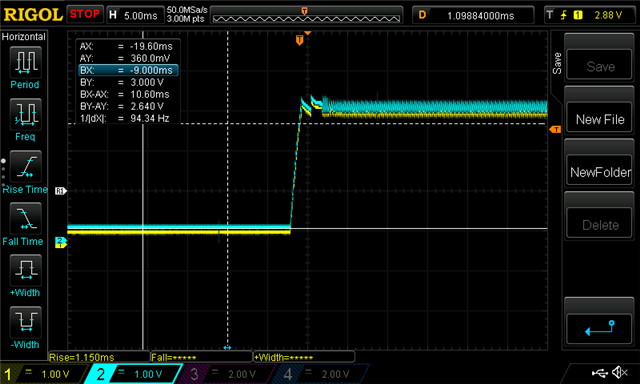




Schematic for TPS6522053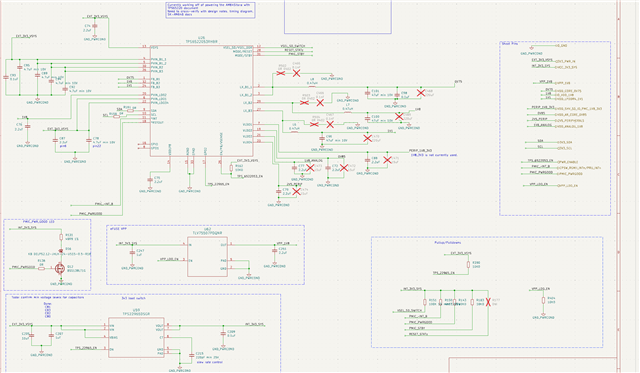
SMPS for 3V3 feeding TPS6522053